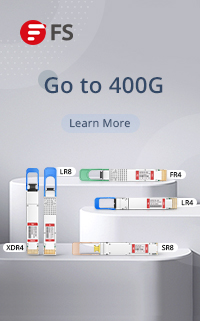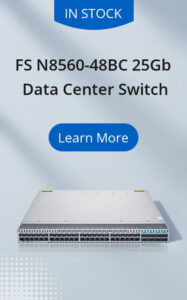The past few years have seen the broad adoption of 10Gbps connectivity at network edge equipment. SFP+ optics include SFP+ fiber devices and SFP+ direct attach copper (DAC) cables. They dominate the 10Gbps connectivity solution in the core or spine due to the longer link lengths and higher aggregated data bandwidth. However, 10GBASE-T cable (Cat 6a/7) is proven to be unbeaten for its lower cost, ease of installation and reliable performance for 10Gbps edge network with a link length of 100 m. In order to get most of your Cat6a cabling, last year HPE and some other vendors launched a 10GBASE-T SFP+ transceiver module. It claimed to give equipment designers and data center professionals a new option in architecting their network solution. This article will provide detailed information about the innovative but controversial 10GBASE-T SFP+ copper module from a positive point of view.
10GBASE-T SFP+ Copper Transceiver—RJ45 connector, 30 m, 2.5 W
SFP+ 10GBASE-T RJ45 copper transceiver is typically designed for high-speed communication links that require 10 gigabit Ethernet over Cat 6a/7 cable with a link limit of 30 m. Compared with standard SFP+ SR/LR fiber optics, here are the added benefits. It uses standard-based technology with the familiar RJ45 connector and provides backward compatibility with legacy networks.
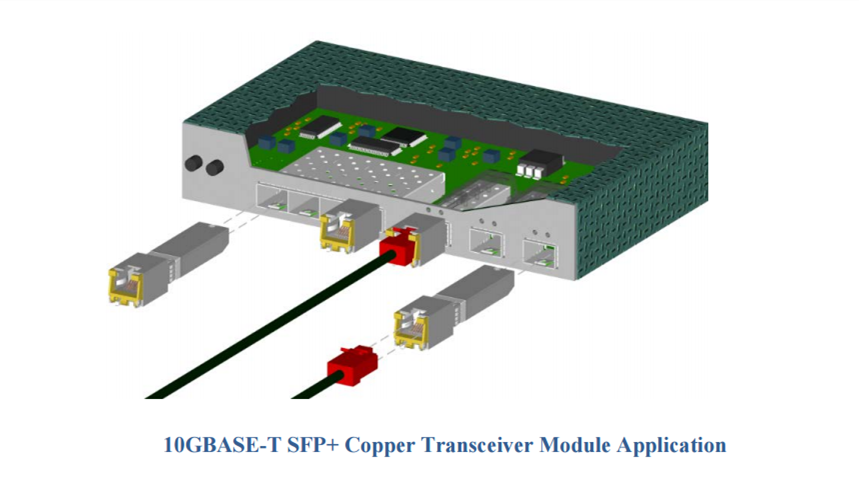
SFP+ 10GBASE-T transceiver, compliant with MSA standard, is the first transceiver that offers 10GbE communication over copper. Seen from the above image, you can directly plug the 10GBASE-T SFP+ module into SFP+ port of the NIC or switch. The power usage and heat generated for 10GBASE-T is 4-8 watts, but SFP+ 10GBASE-T copper transceiver consumes 2.5 watts. Obviously, the specification of SFP+ copper module has been optimized to save more than 0.5 W per port when compared to an embedded 10GBASE-T RJ45 port for link distances up to 30m.
Nowadays SFP+ 10GBASE-T transceiver, owing to the compatible issue with switches, is not offered by many vendors. However, from a network equipment designer’s perspective, 10G SFP+ copper modules will become popular in the near future. FS.COM recently releases some 10GBASE-T SFP+ Copper modules that are tested compatible with some brands.
The Innovative Points of SFP+ 10GBASE-T Transceiver
It is true that Cat6/Cat6a cabling can provide limited support of 10GBASE-T in some environments. But the reality is that there are some compelling reasons to specify SFP+ 10GBASE-T copper modules in a new 10 Gbps-ready data center.
- Smaller Form Factor: Interoperable with any SFP+ cage and connector system
- Reliability: The RJ45 connector interface is rock solid. No surprises when deployed in your data center
- Reach: Up to 30 m over Cat 6a UTP cable, sufficient for all network access use cases
- Innovation: Hot-pluggable with a managed soft-start
- Performance: Full PHY presentation, which means nothing is missing
- Cost: Pay-as-you-grow model that performs for today and scales for tomorrow
The Controversial Points of SFP+ 10GBASE-T Copper Module
Q1: Vendors held that it would never be possible to create a 10Gb copper transceiver as SFP+ specification use less power than 10GBASE-T requires. But theoretically, SFP+ 10GBASE-T copper module indeed reduces the power consumption of more than 0.5 watts.
Note that SFP+ 10GBASE-T transceiver module meets the SFP+ spec, but it is not meeting 10GBASE-T official spec.
Q2: With the cheap SFP+ DAC Twinax and reliable SFP+ fiber optics available for 10Gbps application, why should people use the SFP+ copper modules?
In terms of application, some server NICs and gears don’t work well with DAC Twinax. In this case, instead of replacing all your copper devices into the fiber cabling, you’d better stick to the copper-based network. The following part displays two scenarios of 10G connectivity by using SFP+ copper modules.
Scenario 1: Use Case Between Server and Storage Appliance
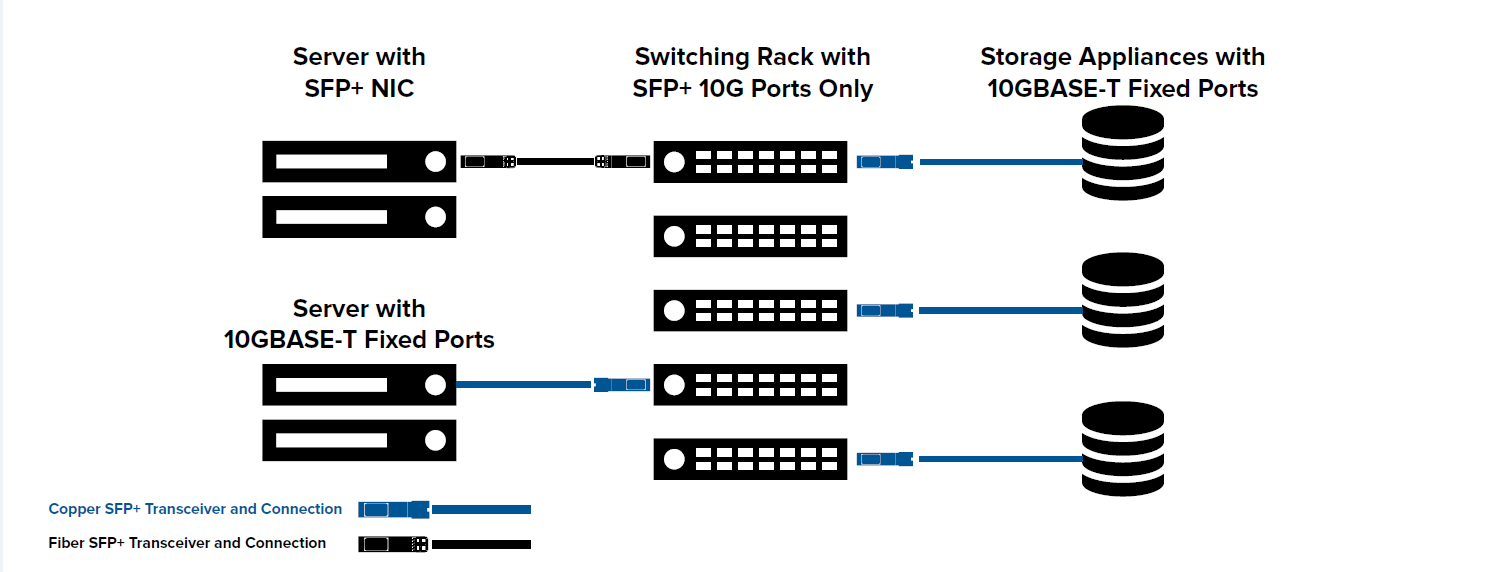
Scenario 2: Use Case Between Edge Switches
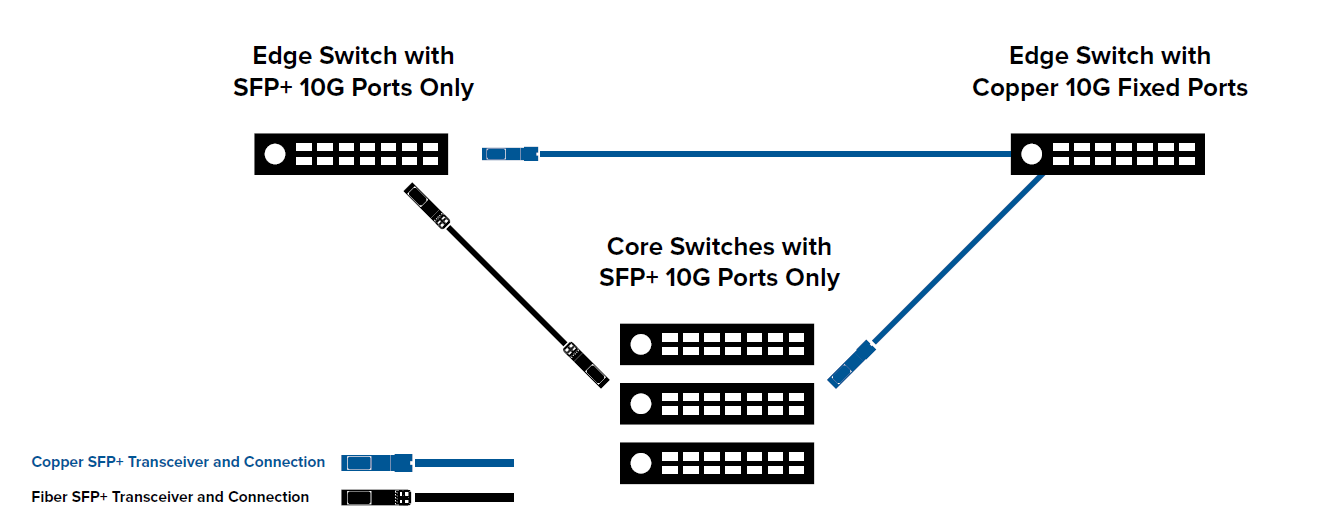
From the technical point of view, 10G SFP+ copper twinax cable and 10G SFP+ modules share some differences in power consumption, latency, linking length and cost.
The power usage, latency and heat generated for 10GBASE-T is 4-8 watts, which is considerably higher than using DAC twinax or fiber optics (nearly 1 watt). SFP+ 10GBASE-T copper module, however, uses 2.5 watts (max). Furthermore, SFP+ DAC cables (both passive and active) can only support up to 10 m. However, the SFP+ 10GBASE-T transceiver connected with Cat6a cables can cover a distance of 30 m.
The low-cost of Twinax DAC makes it a better choice for performance in ToR deployments. With 10m twinax you can usually cover up to 3-adjacent racks. While the existing SFP+ 10GBASE-T transceivers usually charge even higher than the regular SFP+ fiber optics. Besides, you should factor in the power and cooler requirement overhead that 10GBASE-T optics brings with it.
Q3: Is it reliable to use SFP+ 10GBASE-T modules in your network?
So far, customers still feel skeptical about this product. Many professionals said that technically it could work, but it is not supported for most of the switches.
Final Words
Data center managers are taking the advantages of the convenience and flexibility provided by deploying 10 Gbps technology over twisted-pair copper cabling and leveraging their investment in installed copper infrastructure. To have a great interoperability between existing fiber switches and those with 10G copper ports, 10GBASE-T copper SFP+ is introduced. However, customers nowadays still choose to use DAC Twinax or SFP+ fiber optics for 10Gbps connectivity. FS.COM, as a reliable OEM vendor, rediscovers 10G Ethernet with copper 10GBASE-T SFP+. Welcome to visit our website for more detailed information.
Related Article:
SFP+ DACS VS 10GBASE-T SFP+
Choose 10GBASE-T Copper Over SFP+ for 10G Ethernet
10GBASE-T vs SFP+, Which Is the Best 10G Network Solution?

